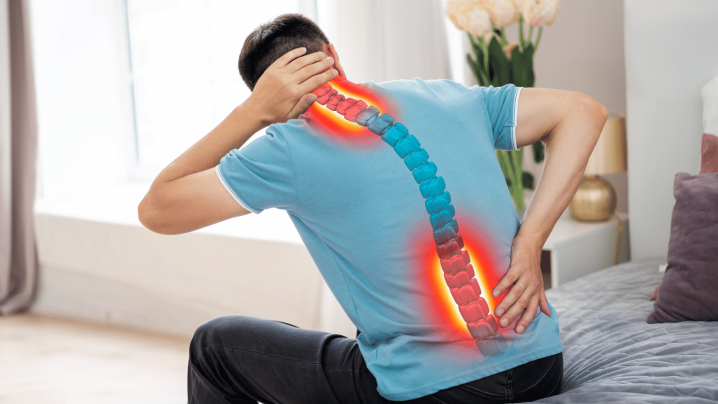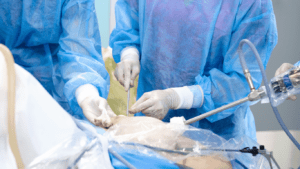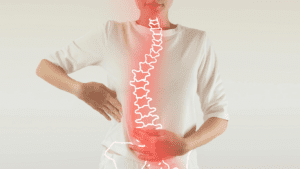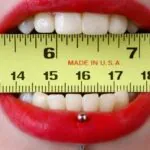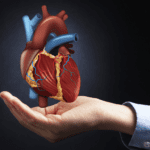A hernia is an often painful and uncomfortable health condition in which tissues or organs are pushed out of their normal position and into another part of the body. It usually occurs in the abdomen, but can also occur in other parts of the body. Hernias can occur in both men and women in different age groups and there are many different types. In this article, we will discuss in detail the types of hernias and how they are treated in modern medicine. We will also provide information about lifestyle changes and prevention methods that can help reduce the risk of hernia. Our aim is to raise general awareness about hernias and inform readers about this common health problem.
Starting with this introduction, I will address each section of the article in turn, starting with the section "What is a Hernia?".
What is a Hernia?
A hernia is a condition in which body tissues prolapse at a weak point or an organ presses on surrounding tissues. This is often characterized by the separation of organs or tissues from their normal anatomical position. Hernias are most common in the abdominal wall, but can also occur in other parts of the body, such as the spine, groin, navel and diaphragm. Hernias are often caused by factors such as heavy lifting, sudden movements, obesity, pregnancy, chronic coughing or constipation. These conditions can increase the pressure in a particular area of the body, causing tissues to peel away from weak points and hernias to form.
The symptoms of hernias vary depending on the type, size and location of the hernia. Some hernias are painless, while others may cause pain, discomfort or a visible swelling. Pain or discomfort may be felt at the site of the hernia, especially during physical activity, coughing or sneezing.
A hernia is usually diagnosed through a physical examination and assessment of the patient's symptoms. In some cases, imaging tests such as ultrasound, MRI or CT scan can be used to further assess the size of the hernia and the tissues it affects.
Having explained what a hernia is and how it occurs, in the next section we will take a closer look at the most common types of hernia and their symptoms.
Types of Hernia
Hernias are divided into several types, depending on the site and nature of their formation. By examining the most common types of hernia and their main characteristics, we can get an idea of the diversity and complexity of this health problem.
Abdominal Hernias
- Inguinal Hernia (Inguinal Hernia): It occurs in the groin area when the intestines or fat tissue is pushed through a weak point in the abdominal wall. It is more common in men than in women and symptoms may increase with actions such as heavy lifting and coughing.
- Umbilical Hernia (Umbilical Hernia): It occurs around the navel and is usually congenital. It can be seen in children and in adults when intra-abdominal pressure increases, such as obesity or pregnancy.
- Herniated Disc (Spinal Hernia): Herniation of the spinal discs into the spinal canal or nerve roots. It can cause symptoms such as back and neck pain, numbness or loss of strength.
Other Hernia Types
- Diaphragmatic Hernia: It occurs when the stomach or other abdominal organs push through a weak area of the diaphragm into the chest cavity. It can cause symptoms such as stomach acid reflux, chest pain and difficulty swallowing.
- Sports Hernia (Sports Hernia): It is a tear or weakness in the abdominal wall in the groin area. It usually occurs as a result of intense physical activity and is characterized by pain.
Each type of hernia differs in its specific symptoms and causes. This diversity plays an important role in determining the correct diagnosis and effective treatment methods.
Hernia Treatment Methods
The methods used in hernia treatment vary according to the type and size of the hernia and the severity of the symptoms it causes. Treatment can generally be divided into two main categories: surgical and non-surgical.
Surgical Methods
- Open Surgery: To repair the hernia, an incision is made directly into the hernia site. The contents of the hernia sac are pushed back into the abdominal cavity and the hernia sac is removed or repaired.
- Laparoscopic Surgery: A minimally invasive procedure in which a camera and special instruments are inserted into the abdomen through small incisions. It offers a shorter recovery time and less pain, but may not be suitable for all cases.
Non-Surgical Methods
- Physical Therapy: It is used to relieve symptoms and improve function, especially for certain types of herniated discs such as herniated discs. It may include strengthening and flexibility exercises.
- Lifestyle Changes: Measures such as weight loss, regular exercise and improving heavy lifting techniques can be taken to reduce the risk of hernias and alleviate the severity of existing hernias.
Hernia treatment should be individualized according to the individual situation and the characteristics of the hernia. Surgery is usually preferred in cases where the hernia causes discomfort and reduces quality of life.
In the next section, I will provide more detailed information on hernia prevention strategies and lifestyle changes that can help reduce hernia risk and improve overall health.
Hernia Prevention and Lifestyle Changes
Although it is not always possible to completely prevent hernias, there are measures that can be taken to reduce the risk. Lifestyle changes can both reduce the risk of developing a hernia and prevent existing hernias from increasing in severity. Here are some strategies that can help with hernia prevention and management:
- Regular Exercise and Strengthening: Exercises that strengthen the abdominal and back muscles can reduce the risk of hernia formation. Especially activities that strengthen the body and increase flexibility, such as pilates and yoga, are beneficial. However, care should be taken when doing heavy lifting exercises.
- Sağlıklı Kilo: Fazla kilo, özellikle karın bölgesindeki basıncı artırarak fıtık riskini yükseltebilir. Dengeli bir diyet ve düzenli egzersiz, sağlıklı bir vücut ağırlığını korumaya yardımcı olabilir.
- Correct Lifting Techniques: When lifting heavy objects, bending your knees and keeping your back straight while putting the weight on your legs can reduce the pressure on the abdominal area.
- Not Smoking: Smoking can slow tissue repair and increase intra-abdominal pressure due to coughing. This can increase the risk of hernia formation.
- Sufficient Fiber Consumption: Adequate fiber consumption is important to prevent constipation. Constipation can increase the risk of hernias, especially in the abdomen.
In addition to improving overall health, these lifestyle changes can also be effective in reducing the risk of hernia. Early treatment when hernia symptoms are recognized can reduce the risk of complications and speed up the healing process.
Conclusion
Hernia is a common health problem that can occur in the body for a variety of reasons. With its various types and treatment modalities, each individual's condition is unique and an effective treatment plan should be customized to individual needs. While surgical methods can be effective in treating hernias in many cases, non-surgical methods and lifestyle changes play an important role in reducing hernia risk and improving overall health. Adopting a healthy lifestyle can help prevent hernias and contribute to the management of existing hernias. When hernia symptoms are recognized, early diagnosis and treatment are vital to achieve the best results.
This article aims to provide an overview of hernia types, treatment methods and prevention strategies. If you have any questions or concerns about a hernia, it is important to consult a health professional.

